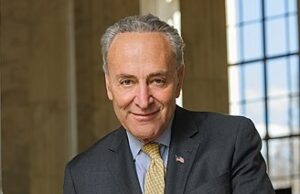WASHINGTON, D.C. – January 14, 2015 – (RealEstateRama) — A new report from the Center for Responsible Lending (CRL) titled “Reckless Driving: The Implications of Recent Subprime Auto Finance Growth” highlights trends in the $870 billion auto lending sector, particularly loans to consumers with below prime credit. Growth in the market raises concerns that subprime auto lending practices are leading to conditions that risk causing serious problems in the larger auto market. The report also questions whether auto loans really are performing better than mortgages did in the period before the mortgage meltdown, as the auto lending industry suggests, or whether increases in delinquency and default rates signal larger problems in the market.
One of the authors of the report, CRL Senior Vice President Chris Kukla issued the following statement:
Those who have expressed concern about the auto lending market have reasons for that concern. Underwriting standards in the subprime market have deteriorated, while practices in the market, like interest rate markup and the sale of add-on products, can make loans unaffordable. Our analysis shows that when the quick speed of car repossessions and home foreclosures are compared, current delinquency and repossession rates are higher than foreclosure rates in the mortgage market.
These trends suggest there are systemic issues in the subprime auto lending market. CRL’s research shows the subprime auto lending market has similarities to the housing market before the 2008 collapse. Importantly, the report shows that efforts to minimize auto loan repossession rates by comparing them to the mortgage market are misleading because auto lenders can repossess a car in 1/10 of the time it takes to foreclose on a house. As a result, a delinquent mortgage loan will be considered delinquent for far longer, making the delinquency rate look larger when compared to the auto lending market where cars are repossessed in a matter of days. Data on the cumulative number of delinquencies and defaults over a period of time is also much more revealing than snapshot data provided by market participants because of the speed of repossessions. CRL estimates that if car repossessions took as long as foreclosures, the equivalent auto repossession rate would be 7.41%. The current home foreclosure rate is 2.65%. Other findings in the report: The subprime market has mushroomed, with the dollar value of loan originations to people with subprime credit doubling since 2009. Subprime loans account for $336 billion in car loans—38.7% of all loans. Car repossession rates have climbed significantly in the last four quarters. The 2Q 2014 repossession rate was 70% higher than the 2Q 2013 rate. Lenders are loosening underwriting standards and extending loan terms (to as long as 96 months) while increasing auto loan amounts, consequently increasing the risk of defaults, particularly for subprime auto loans. While the monthly payment for the average subprime loan is only 8.7% higher than for a super prime loan, the interest paid by the average borrower is over 400% more. Dealer interest rate markups and selling and financing add-on products exacerbate the risk of default and increase risk disproportionately for borrowers of color.
The full report is available online.
For more information, contact Andrew High 919-313-8533, . ### About the Center for Responsible Lending The Center for Responsible Lending is a nonprofit, nonpartisan research and policy organization dedicated to protecting homeownership and family wealth by working to eliminate abusive financial practices. CRL is affiliated with Self-Help, one of the nation’s largest community development financial institutions.
















